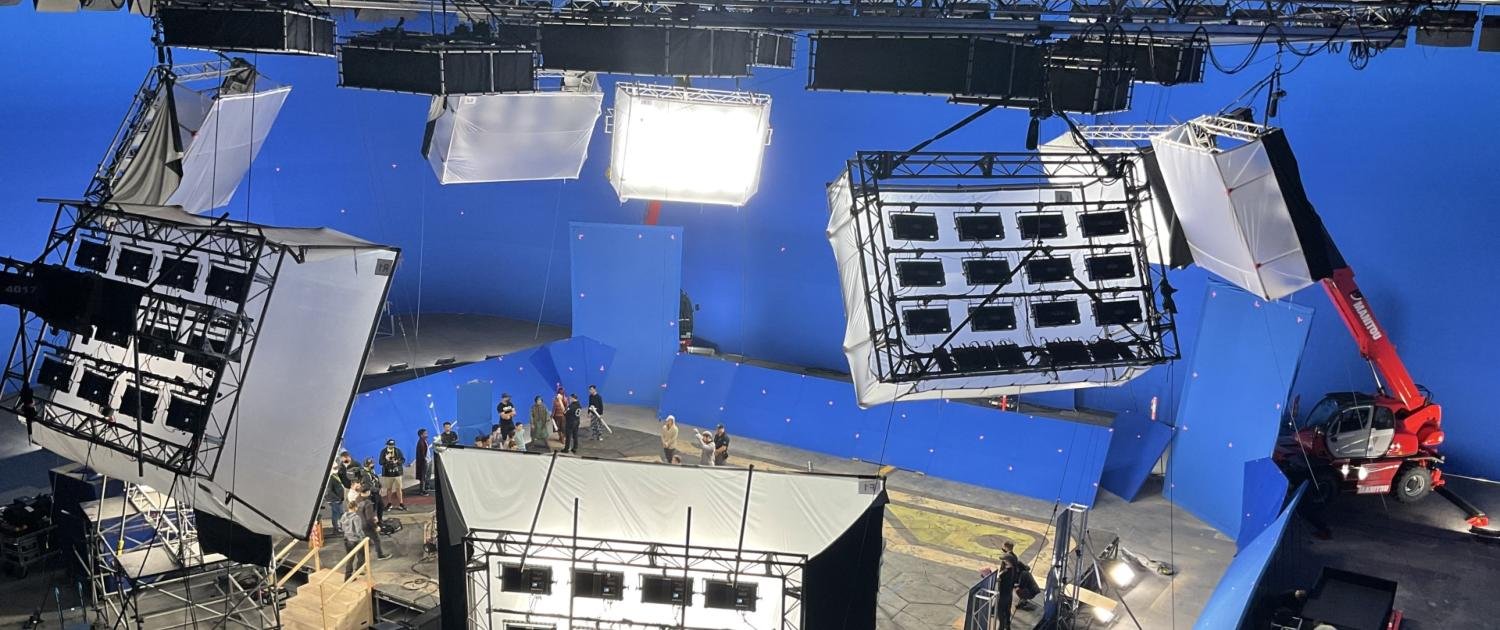Independent filmmaking, often shortened to "indie" filmmaking, is the art of creating films outside the major studio system. Driven by creativity, passion, and often modest budgets, indie filmmakers craft unique stories that challenge conventions, explore niche genres, and introduce fresh perspectives. Independent filmmaking can be both incredibly rewarding and challenging, offering a chance to tell original stories while navigating financial constraints and resource limitations.
In this blog, we’ll explore the world of independent filmmaking, its appeal, and what it takes to succeed as an indie filmmaker.
What is Independent Filmmaking?
Independent filmmaking refers to the production of films without the financial backing or creative oversight of major studios. These films are usually produced with limited budgets, using personal financing, crowdfunding, or small-scale investors, and are driven by a passion for storytelling and experimentation. Indie films often focus on character-driven narratives, unique voices, or unorthodox techniques that stand out from mainstream commercial films.
Why Choose Independent Filmmaking?
Creative Freedom
Independent filmmakers have more control over the storytelling, style, and direction of their projects. Without studio mandates, they are free to experiment with unconventional narratives, push boundaries, and take creative risks that are less common in big-budget films.Authentic and Diverse Stories
Indie films often delve into topics and perspectives that major studios overlook, allowing filmmakers to explore complex, diverse, or controversial themes. These films can address social issues, highlight underrepresented voices, or experiment with genre in a way that feels genuine and fresh.Hands-On Learning Experience
Indie filmmakers often wear many hats—directing, producing, editing, and sometimes even acting. This hands-on approach provides valuable experience in multiple aspects of filmmaking, offering a deep understanding of the entire production process.Intimate Audience Connection
Independent films can connect with audiences on a personal level. Because of their unique storytelling and focus on human experiences, they often resonate deeply with niche audiences, building a dedicated fan base.
Key Stages of Independent Filmmaking
Development and Writing
Every film starts with an idea. For indie filmmakers, this phase often involves writing a compelling script that can be achieved on a limited budget. A strong script with memorable characters and an engaging story can compensate for the lack of high-budget special effects or elaborate sets.Financing and Budgeting
Independent filmmakers rarely have access to substantial funding. Instead, they turn to methods like crowdfunding, personal savings, grants, or support from investors. Budgeting is critical at this stage, with filmmakers prioritizing spending on essential items like equipment, talent, and post-production.Pre-Production
This phase involves planning every detail before shooting begins. Indie filmmakers often have to be resourceful—securing locations, gathering a small crew, and sourcing equipment affordably. A well-organized pre-production phase can prevent delays and save money, as it ensures that every scene is planned carefully to maximize limited resources.Production
The filming phase is where the story begins to come alive. Indie productions often rely on smaller crews, shorter shooting schedules, and more guerilla-style techniques. Flexibility and problem-solving are crucial since low-budget shoots can encounter unexpected issues, from location restrictions to weather changes. The collaborative atmosphere on indie sets also encourages everyone to pitch in wherever needed.Post-Production
Editing, sound design, and color grading are all part of post-production, where the final film takes shape. Many indie filmmakers handle editing themselves or work with a small post-production team. This phase often requires creativity and resourcefulness, especially if there are budget constraints for advanced editing software or professional-grade effects.Distribution and Marketing
Getting the film to an audience is a significant challenge for indie filmmakers. Traditional distribution channels are often closed to independent productions, so filmmakers turn to film festivals, streaming platforms, social media, and even self-distribution on YouTube or Vimeo. Marketing is essential, and indie filmmakers must be proactive about building awareness, often relying on grassroots campaigns, social media, and word-of-mouth.
Funding Options for Independent Filmmakers
Crowdfunding
Platforms like Kickstarter and Indiegogo have revolutionized indie film funding by allowing creators to raise money directly from supporters. Crowdfunding campaigns are a great way to build an audience while raising funds, but they require time, a strong pitch, and effective promotion.Grants and Film Funds
Many organizations offer grants and funds specifically for independent filmmakers. These grants are usually merit-based and require an application process. Examples include the Sundance Institute, the Tribeca Film Institute, and the National Endowment for the Arts.Film Competitions
Some film competitions offer cash prizes or in-kind support, such as equipment rentals, for winning projects. Participating in these contests can also help build credibility and industry connections.Private Investors
Finding investors for an indie film can be challenging, but not impossible. Indie filmmakers can pitch their ideas to potential investors who may be interested in supporting innovative projects, though this often involves giving up a percentage of profits or creative control.
Key Skills for Independent Filmmakers
Storytelling and Scriptwriting
The ability to tell a compelling story is the foundation of any successful film. Independent filmmakers need to develop strong scriptwriting skills and create stories that engage viewers without relying on big-budget effects.Resource Management
Budget constraints mean that indie filmmakers need to be efficient with their resources. This involves careful planning, prioritization, and making the most of what’s available, from locations to talent.Adaptability and Problem-Solving
Indie film shoots are often unpredictable, with limited time and money to fix issues. Filmmakers must be able to think on their feet, adapt to unexpected challenges, and find creative solutions.Marketing and Networking
Promoting an indie film requires building an audience, creating excitement, and connecting with potential viewers, distributors, or festival organizers. Skills in networking and marketing are crucial, especially for those hoping to distribute their film widely.Technical Skills
Indie filmmakers often need to be a “jack of all trades,” with knowledge of directing, cinematography, editing, sound design, and more. Technical proficiency can also save money, as filmmakers who can handle tasks themselves may not need to hire additional crew.
Tips for Success in Independent Filmmaking
Write Stories That Fit Your Budget
Design your story around what you can realistically achieve. Limiting locations, keeping the cast small, and avoiding expensive props or effects are ways to keep costs down without sacrificing quality.Build a Supportive Network
Networking with other indie filmmakers, actors, and crew members can provide invaluable support. Indie communities often share resources, lend equipment, or offer advice, which can make a big difference.Focus on Strong Characters and Dialogue
Great characters and dialogue can engage audiences even if the budget is minimal. Develop characters with depth and make sure the dialogue is natural and purposeful.Take Advantage of Film Festivals
Festivals are one of the best ways to showcase indie films. Not only do they provide exposure, but they also give filmmakers opportunities to connect with industry professionals and distributors.Embrace Guerrilla Filmmaking
Guerilla filmmaking is a hands-on approach that maximizes flexibility and resourcefulness. Whether it’s filming in public spaces without a permit or repurposing everyday objects as props, guerilla techniques can help indie filmmakers work within their means.Don’t Be Afraid to Experiment
Indie films are celebrated for their innovation, so don’t be afraid to try unconventional techniques or explore unique storytelling methods. Viewers often appreciate the raw, authentic feel of indie films that dare to break the mold.
The Legacy of Independent Filmmaking
Independent cinema has brought us some of the most iconic and groundbreaking films of all time, from Pulp Fiction and Eternal Sunshine of the Spotless Mind to Moonlight and Get Out. These films prove that creativity and vision can create unforgettable cinema, regardless of budget. Indie filmmakers continue to shape the industry, challenging norms, pushing boundaries, and reminding us that compelling storytelling always has an audience.
Final Thoughts
Independent filmmaking is a challenging yet rewarding journey. It requires dedication, resilience, and a true love for the art of cinema. Despite financial constraints and production challenges, indie filmmakers can create impactful stories that resonate with audiences worldwide. So, if you’re considering making your own film, dive in and embrace the adventure—independent filmmaking is one of the most powerful ways to bring your unique vision to life.





